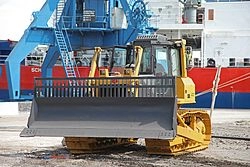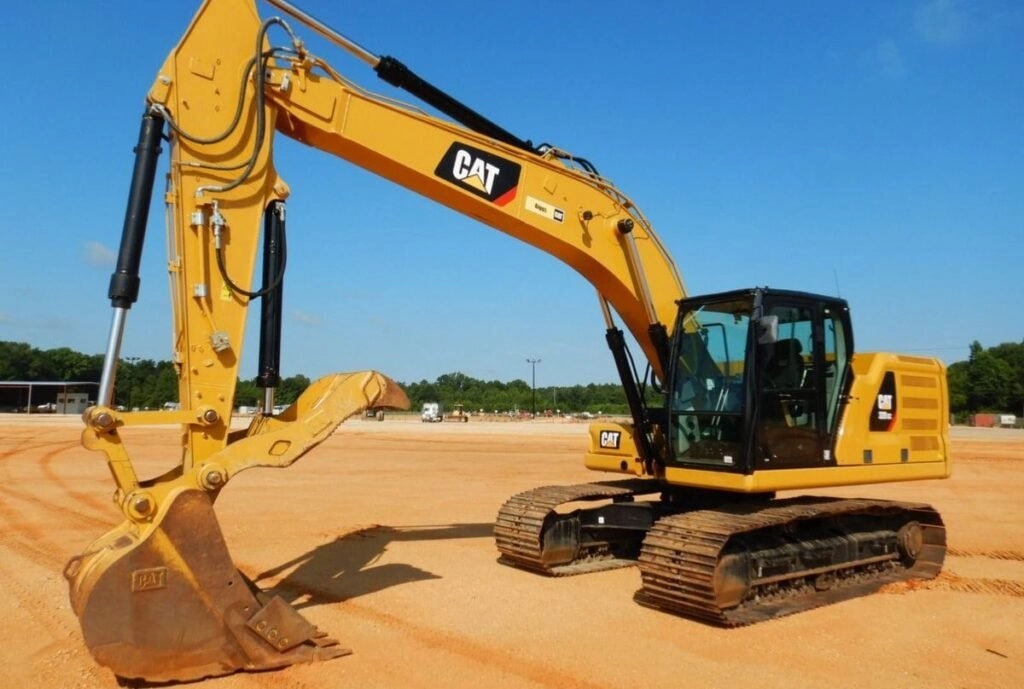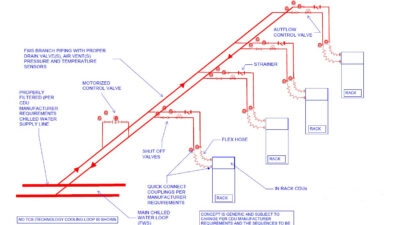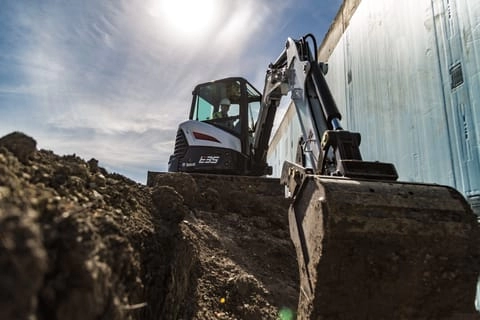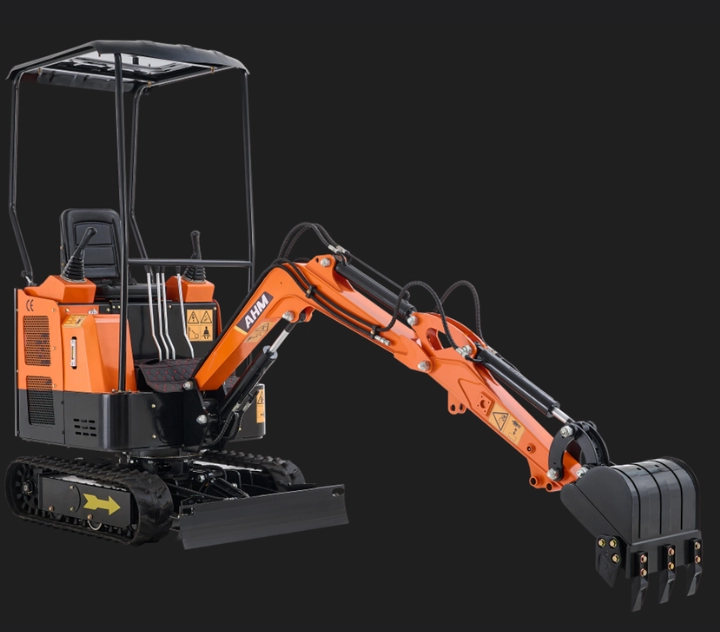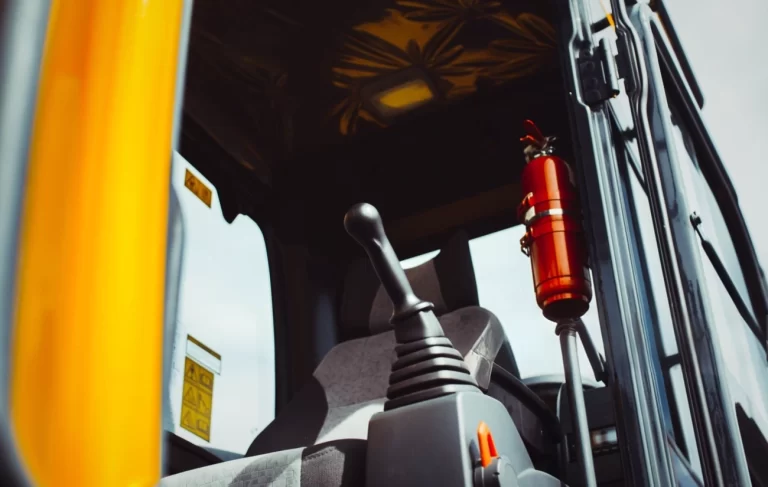-
Shandong Province, China
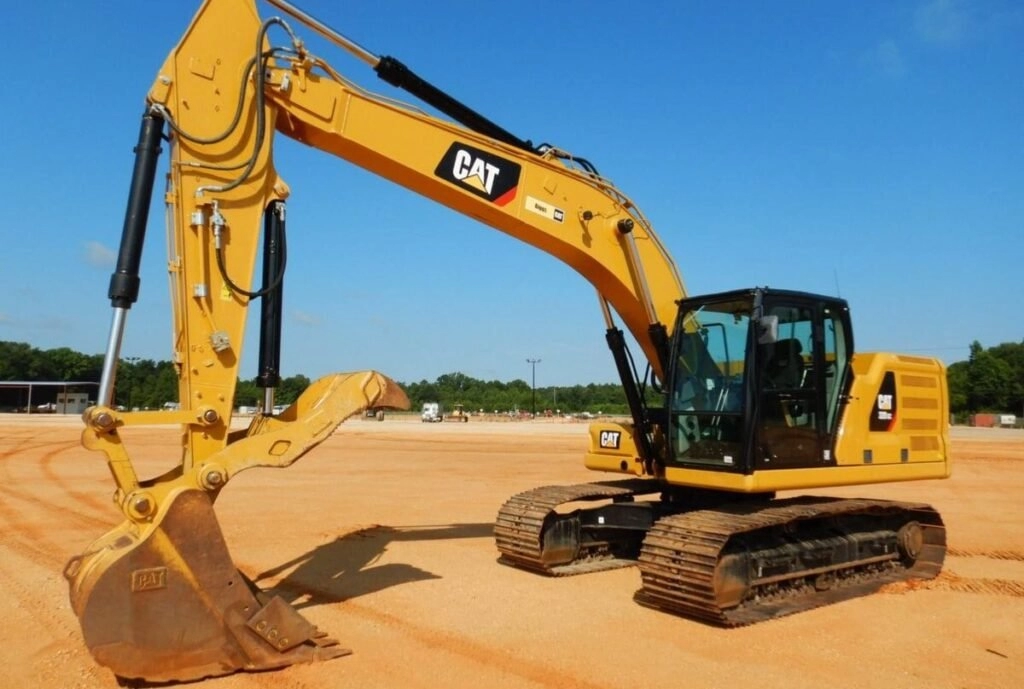
Professional Guide to Comparing Excavators and Bulldozers: Choosing the Right Construction Machinery
What is an excavator? Definition and main functions
An excavator is a type ofheavy earthmoving machineryprimarily used for digging, moving soil, rock, and various construction materials. Its core functions includedigging, breaking, grabbing, and loadingIt plays a very important role in various construction, mining, and gardening projects. Excavators can significantly improve project efficiency, especially suitable for work environments that require precise digging and multi-directional operations.
Typical uses of excavators and main industries
Excavators are widely used in the following industries and scenarios:
- Construction sites: Foundation excavation, pipeline laying, and waste cleanup
- Mining Industry:Ore extraction and transportation
- Infrastructure:Roads, bridges, and tunnel construction
- Landscape Greening:Land reclamation, tree planting, and pond excavation
- Agriculture:Construction of large ditches and irrigation systems
These diverse applications illustrate the wide applicability of excavators in different terrains and operational requirements.
Overview of main components of excavators
Excavators consist of multiple key components that work together to perform various complex tasks:
- Arm: Extends and operates excavation tools, serving as the main support for excavation actions
- Bucket: Used for digging and transporting soil, rocks, etc., with various shapes to adapt to different tasks
- CabOperator controls the position and movement of the excavator, equipped with highly humanized design to enhance comfort and safety
- TracksProvide stable support and mobility, adapting to muddy, uneven, or rugged terrain
These components are designed to work together, ensuring the efficient operation of the excavator in various environments.
Types and examples of excavators
According to different uses and scales, excavators can be divided into various models:
- Mini Excavator:Usually weighing 1 to 5 tons, suitable for narrow spaces or detailed work, commonly seen in urban construction and landscaping projects.
- Medium Excavator:Weighing 5 to 15 tons, with a wider range of uses, it is the first choice for most medium-scale construction.
- Large Excavator:Over 15 tons, suitable for mining and large public works, requiring strong power and a wider working range
For example, our HYExcavator series of small excavators covers various specifications from 0.8 to 2 tons, designed for the diverse terrain and small to medium projects in Taiwan, featuring high efficiency and flexible operation advantages.
Excavator inEarthmoving machinery and construction equipmentIn the field, it holds a significant position and is an indispensable engineering tool. Understanding its definition, structure, and types helps in selecting the most suitable model to meet the needs of different projects.
What is a bulldozer: definition and main functions
A bulldozer is a heavy construction machine primarily used forleveling land and moving large amounts of earth and stone.Its design focus is onBulldozing, land leveling, and breaking hard groundare commonly found in fields such as construction, mining, agriculture, and road engineering. Bulldozers have powerful engines and can operate continuously in various harsh terrains, making them indispensable heavy machinery for earthworks and large construction projects.
Common application scenarios for bulldozers
- Land leveling: Effectively leveling uneven ground to create an ideal working environment for subsequent construction.
- Roadbed construction: During road construction, bulldozers are responsible for compacting and leveling the soil.
- Mining operations: Clearing rocks and hard soil, assisting in excavation and earthmoving.
- Agricultural engineeringMain helper in land tillage and large-scale farmland transformation.
Common on these construction sitesBulldozer usescan quickly and efficiently complete large-scale earth and stone movement, saving labor and time.
Main structural components of the bulldozer
-
Blade
Located at the front, responsible for pushing soil and leveling. The shape and size of the blade vary, and the tilt angle and height can be adjusted according to different operational needs.
-
Ripper
Installed at the rear, used to loosen hard soil or rock layers, facilitating subsequent leveling operations by the blade.
-
Tracks
Provides good traction and stability, allowing the bulldozer to operate flexibly in difficult terrains such as muddy areas, sandy ground, and slopes.
-
Cab
Provides operators with a comfortable view and a safe environment. Modern bulldozers are equipped with air conditioning, soundproofing systems, and advanced control interfaces to enhance operational efficiency.
Common types of bulldozers
-
Small bulldozer
Suitable for entering narrow job sites, highly flexible, commonly used in urban or small projects, suitable for the variable and localized construction environment.
-
Medium bulldozer
Used for general earthworks and medium-sized leveling projects, with power and size between small and large.
-
Large bulldozer
Mainly used in mining and large-scale infrastructure, with strong pushing power and endurance, suitable for large engineering projects.
Through these different types of bulldozers, the construction site can choose the most suitable equipment according to needs, achieving the best balance of efficiency and cost.
The above summarizes the common occurrences at engineering sites in TaiwanDefinition, function, and application of bulldozersto help you understand the key role of bulldozers in various earthwork projects and how different structural designs support diverse work requirements.
Main differences between excavators and bulldozers: comparison of functions, operation, movement methods, suitable terrain, and types of work
UnderstandThe difference between excavators and bulldozershelps in choosing the most suitable construction equipment. The two have significant differences in function, operation, applicable terrain, and work requirements, detailed comparisons are made below.
Functional differences
- Excavatoris mainly used for digging, transporting soil and rock, and delicate operations, such as digging foundations, ditches, or building foundations. Its movable arm and bucket design allow it to excel in precise excavation and grading of soil and rock.
- Bulldozeris mainly used for pushing, filling, and leveling the ground, utilizing the large blade at the front to flatten the soil. It is commonly used for large-scale land excavation or terrain refinement, suitable for land preparation work, such as road foundation construction.
Movement and Operation Method
- ExcavatorAdopts a 360-degree rotating operating platform, with a flexible working range, capable of precise excavation in narrow spaces or irregular terrains. Its movement relies on tracks, which are stable but slower in speed, emphasizing operational flexibility.
- BulldozerThe operation is relatively simple; when the bulldozer blade pushes the soil, it requires steady advancement at a relatively uniform speed, suitable for long-distance pushing work. The bulldozer is also a tracked machine, but due to its heavier structure, its range of movement is not as flexible as that of an excavator.
Suitable terrain and type of work
- ExcavatorMore suitable for complex terrains that require detailed construction, such as construction sites, slopes, trench excavation, etc., especially effective in narrow areas or when high precision earthwork operations are needed.
- BulldozerSuitable for open and flat ground, excels in large-scale land leveling and bulldozing operations, with the best efficiency in relatively open and flat terrain.
Size, power, and accuracy comparison
| Item | Excavator | Bulldozer |
|---|---|---|
| Size | Small excavators as small as 0.8 tons, suitable for small-scale projects | Typically larger in size, designed mostly for heavy-duty operations |
| Power output | Power concentrated on the digging arm and swing motor | Power concentrated on track propulsion and bulldozer blade movement |
| Operating accuracy | High, capable of performing fine excavation and implantation operations | Low, suitable for large area uniform pushing and leveling |
| Control flexibility | High, 360-degree rotation, can operate in multiple directions | Low, mainly linear propulsion |
In summary,ExcavatorThe advantages are obvious when high precision excavation and flexible operations are required, whileBulldozerit is more efficient in large-scale, extensive land leveling work. Choosing the right machinery can ensure smooth project progress and enhance site productivity.
Comparison of the advantages and disadvantages of excavators and bulldozers
Advantages and limitations of excavators
The biggest advantage of the excavator is its flexibility and versatility. Its articulated arm and various attachments make it very adept at tasks such as digging, transporting, and demolition. For fine and precise operations, such as trench digging and small projects in urban areas, the excavator performs exceptionally well.
Advantages include:
- Can rotate 360 degrees, wide working range
- Suitable for various terrains, especially rugged and uneven surfaces
- Multiple small excavators, convenient for operation in narrow urban spaces
- Saves labor and is highly efficient
However,The limitations of excavators are also obvious, mainly due to their weaker pushing abilityand they cannot level large areas of land like bulldozers. In addition, excavators are less efficient in pushing and removing hard objects (such as large rocks), and their fuel consumption is relatively high.
Advantages and Limitations of Bulldozers
The design focus of bulldozers is on leveling and moving large amounts of earth and stone.Their advantages are powerful pushing force and stability. Its wide blade and strong tracks allow it to quickly and effectively perform large-scale ground leveling, filling, and clearing.
The advantages of bulldozers include:
- Powerful bulldozing capability, suitable for large-scale construction
- Sturdy structure, able to handle hard ground and heavy loads
- Simple operation, lower maintenance costs
- Stable performance in muddy and soft ground
But bulldozers also have drawbacks,It has poor maneuverability, a large turning radius, and is difficult to use in narrow or complex terrain. Also, due to its more singular actions, it is not suitable for fine digging or multi-task operations.
Comparison of efficiency and flexibility between excavators and bulldozers
| Item | Excavator | Bulldozer |
|---|---|---|
| Efficiency | High efficiency in fine operations | High efficiency in large area leveling |
| Mobility | Flexible rotation, suitable for small spaces | Stable operation but low flexibility |
| Versatility of use | Multi-functional accessory support | Focus on ground pushing |
| Maintenance costs | Higher | Lower |
In summary,Excavators are more suitable for small projects that require precision work and complex engineering, especially in urban dense areas and the variable construction environment of hilly terrain. Bulldozers, on the other hand, have advantages in large-scale infrastructure and land clearing, making them an ideal choice for civil engineering or agricultural scenes. Understanding their respective advantages and disadvantages can help you select the most appropriate heavy machinery, improving construction efficiency and cost-effectiveness.
Which type of machinery is suitable for your project excavator vs bulldozer comparison
In selectionExcavator and bulldozerFirst, you must clearly understand yourType of project, terrain conditions, work requirements, and budgetThese factors will directly affect which type of machinery can complete the task more efficiently.
Type of project and usage scenario
-
Excavators are suitablefor projects that require excavation, trenching, demolition, or precise handling of earth and stone. Such as small building foundation projects, pipeline laying, narrow urban construction sites, and landscaping projects. In urban centers or hillside construction in Taiwan, the mobility and precision of excavators have particular advantages. The small excavator series from HYExcavator (0.8~2.0 tons) is especially suitable for this type of work, being flexible and cost-effective.Learn more about small excavators
-
Bulldozers are suitablefor large area pushing, leveling, compacting, or crushing stone work. Typical examples include road construction, mining operations, and leveling roadbeds. They have strong ground propulsion in soft or rugged terrain, allowing for high-speed pushing and saving time.
Terrain and work environment considerations
-
Rugged terrain: Bulldozers are more suitable for this type of environment due to their stable chassis and strong power; excavators are more suitable for locations with limited operating space and require precise work.
-
Narrow or complex job sites: Small excavators, with their flexible arm design, can easily enter and exit narrow areas for excavation, demolition, or pipeline work.
Work requirements and budget
-
Large engineering scale, large earthmoving volume: Bulldozers usually have greater power and high coverage, commonly used for large-scale land leveling and pushing operations, with higher cost-effectiveness.
-
Need for multifunctionality and precision: Excavators not only dig but can also be responsible for grabbing, demolition, and other tasks, with higher multifunctionality.
-
Budget constraints: The initial investment and operating costs of a small excavator are often lower than those of a bulldozer, making it suitable for small projects with limited funds.
The advantages of shared machinery
In certain complex projects,simultaneously using an excavator and a bulldozerWill achieve the best results, for example:
- First, use an excavator to complete the excavation and detailed handling operations.
- Then use a bulldozer for land leveling and high-speed pushing.
This combination can balance detail and efficiency, saving time and effort.
Understand according to your project needs.The characteristics of excavators and bulldozersWithThe real working environmentis essential for making the right choice. If you want to learn more about HYExcavator's small excavators, please refer to ourproduct details pageto help you find the equipment that best fits the market.
Why choose HYExcavator's mini excavators
Brand professionalism and unique advantages
HYExcavator, as a local professional mini excavator manufacturer, has accumulated years of R&D experience, focusing on providing0.8 tons to 2.0 tonsvarious models of mini excavators, such as 08, 12, 15, 17, and 20 models. These models are particularly suited to the needs of the market, suitable for narrow job sites and variable terrain, achieving high performance and durability. The brand's core advantage lies inSturdy structure, sensitive control, meeting the construction needs of agriculture, construction, and urban environments.
The efficiency of HYExcavator machines in typical projects
In many local project cases, HYExcavator's small excavators demonstrate excellent work efficiency. Compared to traditional large equipment, HYExcavator's equipment is more flexible, capable of completing excavation, transportation, and leveling operations in crowded or space-limited locations, while reducing construction time.Fuel-efficient, environmentally friendly, and space-savingis a significant advantage valued by many customers on construction sites. Whether it's urban renewal, small earthworks, or gardening and landscape beautification, HYExcavator can provide stable and efficient solutions.
Customer support and after-sales service
Choosing HYExcavator also allows for localizedquick repairs and parts supplyto ensure the machine remains in optimal condition, avoiding project delays. The brand values after-sales service and providesProfessional technical support and user trainingto help customers get started quickly and improve work efficiency. In addition, the HYExcavator website also provides comprehensive product information and customer service options, making it convenient for users to consult and contact online at any time, such asContact Uspages, enhancing the purchasing and usage experience.
In summary, HYExcavator mini excavators arelocally manufactured, flexible in operation, and have excellent after-sales service.With these advantages, it has become the first choice in land and construction projects in Taiwanhigh-efficiency excavation and earthmoving machinery. If you want to learn more about the sizes and prices of mini excavators, please refer to ourmini excavator specifications and pricing page。
practical advice for renting or purchasing excavators and bulldozers
Choosing the rightexcavator or bulldozeris very important for project efficiency and cost control. Here are a few key points to help you make informed decisions in construction or landscaping projects.
Key points to consider when choosing machinery
- Purpose and working environmentFirst, confirm whether your work requirements are for excavation, transportation, or leveling the ground. For example, a small excavator is suitable for narrow spaces or detailed work, while larger earthmoving operations may require a bigger bulldozer.
- Machine size and powerChoose based on the site space and soil characteristics; different machine models have varying load capacities and power. Avoid selecting machines that are too large or too small, as this can affect work efficiency and safety.
- Brand and modelIt is very important to choose a brand with a good reputation that meets local needs. For example, we recommend the HYExcavator small excavator, designed for the narrow alleys and varied terrain of Taiwan, which is easy to use.
Maintenance and Care Recommendations
- Regularly check the hydraulic systemRegular replacement of hydraulic oil and filters can prevent equipment failure and extend service life.
- Track and Tire MaintenanceThe bottom track and the bulldozer's steel plates must be kept in good condition to avoid ground slipping and unnecessary wear.
- Cleaning and Lubrication:Keep the machinery clean, regularly lubricate all joint components to ensure smooth operation and reduce wear.
Cost-effectiveness and Return on Investment Assessment
- Purchase Cost VS Leasing Flexibility:Limited initial funds or short-term projects may opt for leasing to reduce financial pressure and maintenance costs; for long-term or frequent use, purchasing is recommended as it is more cost-effective in the long run.
- Fuel efficiency and maintenance costs:Choose models with high fuel efficiency to reduce long-term operating costs. The HYExcavator series particularly emphasizes energy-saving design, suitable for the variable operating environment in Taiwan.
- Risks and advantages of used machinery:Used equipment is priced lower, but maintenance and reliability may be issues, so be sure to confirm the equipment's condition before purchasing.
Summary
Leasing or purchasingexcavators and bulldozersis to clarify work requirements, understand machine performance and maintenance requirements, and evaluate short-term and long-term costs. Reasonable selection of equipment not only improves project efficiency but also effectively controls the overall budget, bringing higher returns on investment for your United States project.


